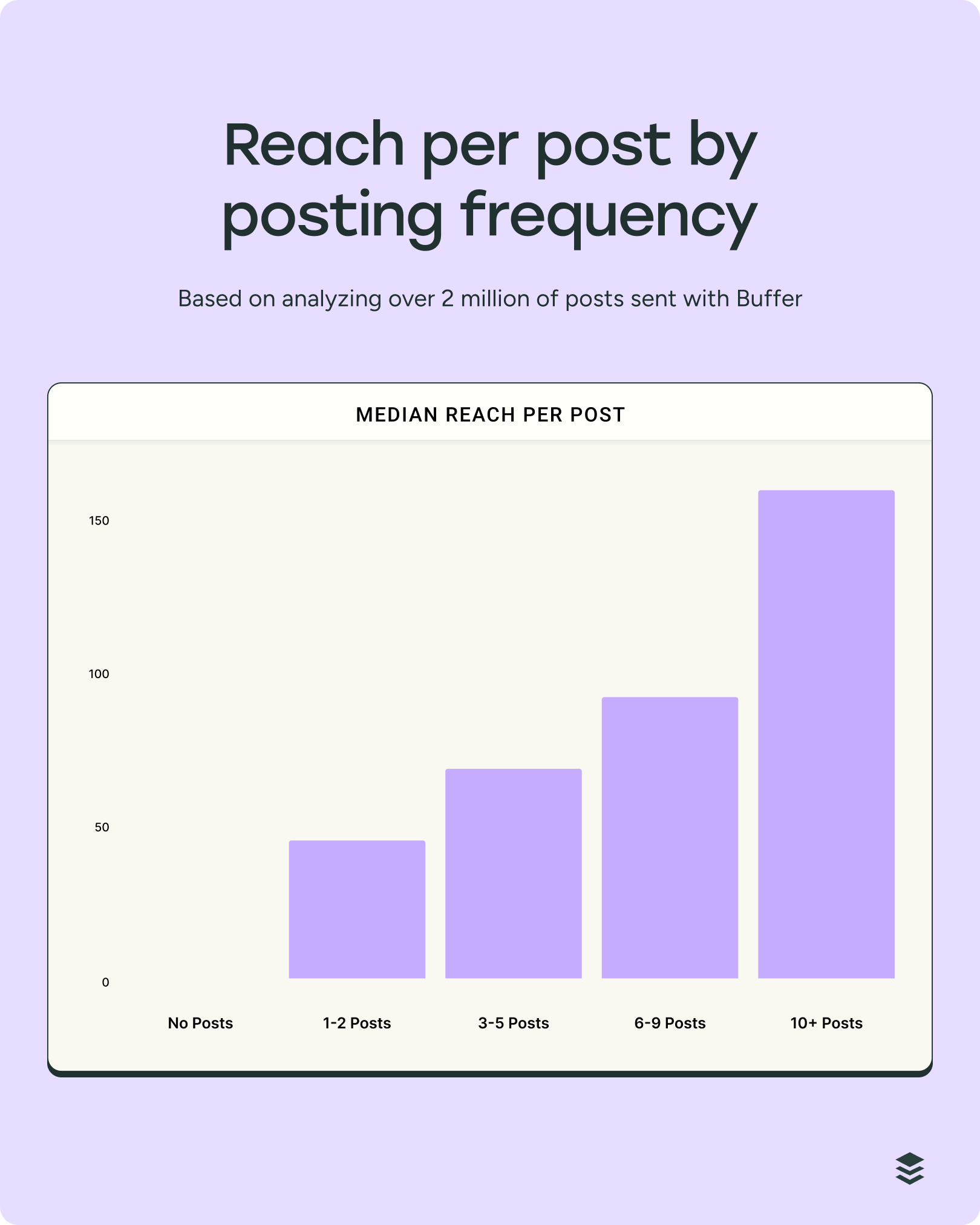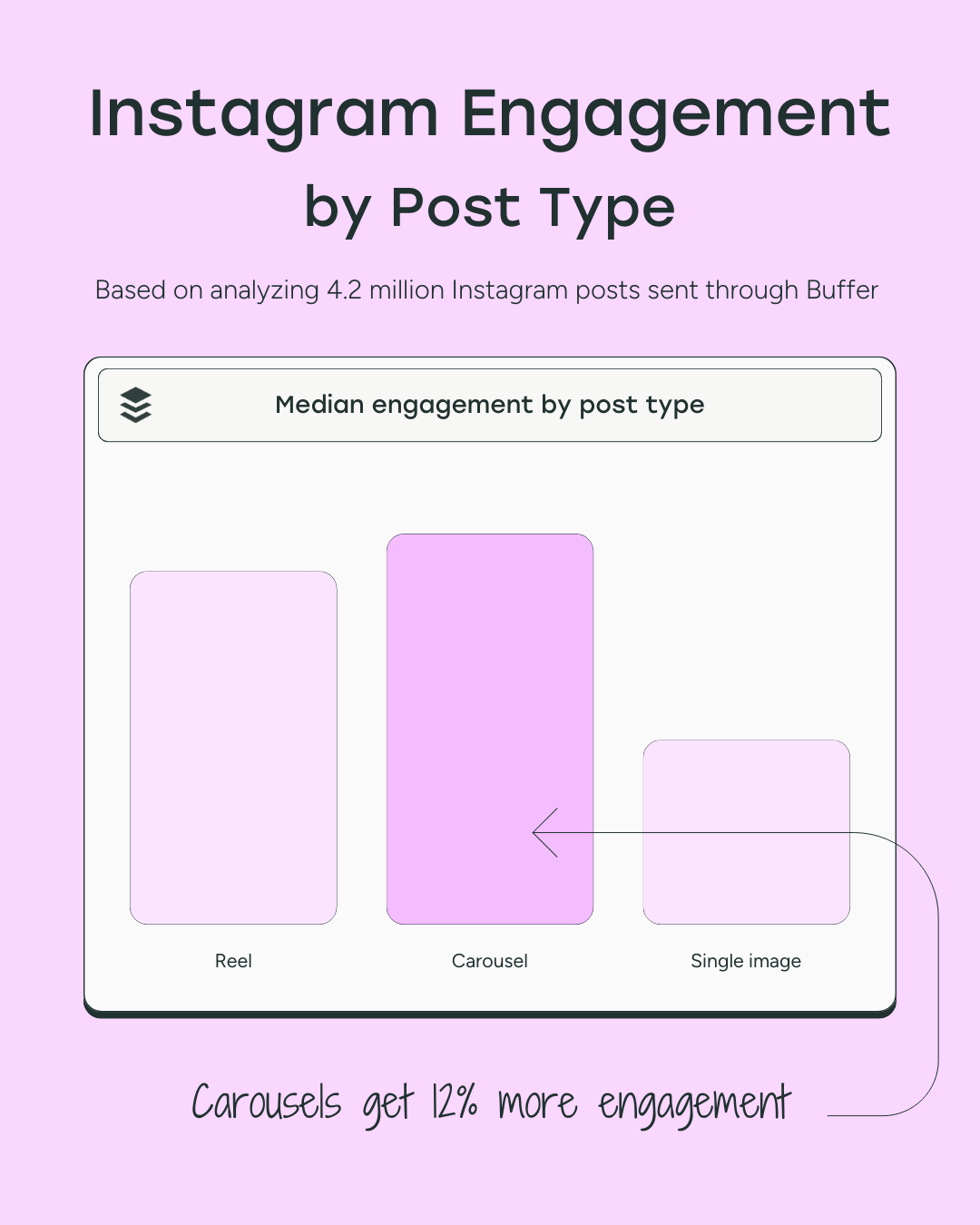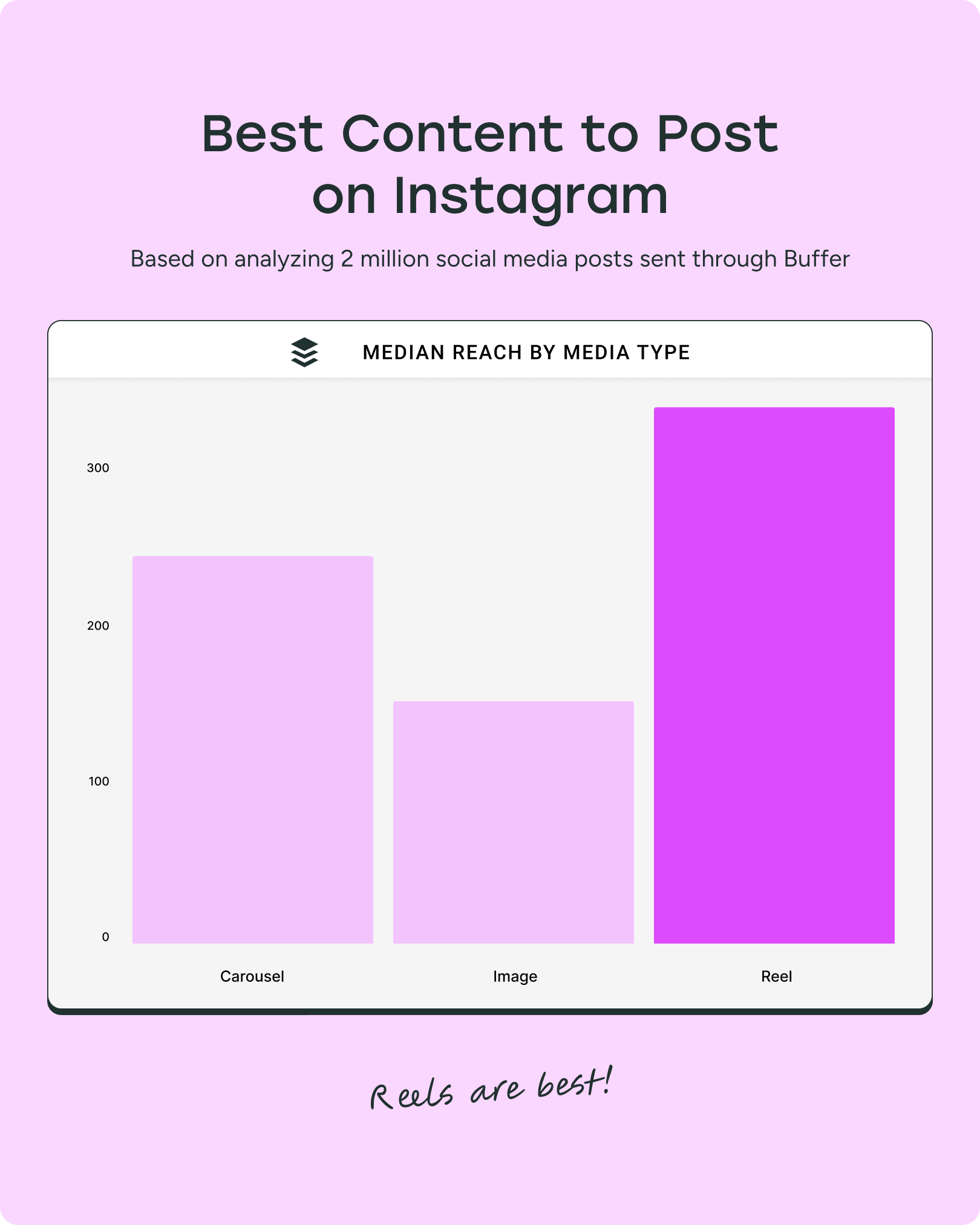One of the most common questions creators ask or get asked: “Is my engagement rate good?”
The truth is, it depends on how many followers you have. A 5% engagement rate means something very different for an account with 500 followers compared to one with half a million.
That’s why we analyzed more than 27 million Instagram posts from 273,000 accounts to see how engagement rates shift as creators grow. The result is a clear picture of what “good” looks like at every stage — from less than 1,000 followers all the way up to 1 million or more.
In this article, we’ll break down the average engagement rate by follower tier and share what the numbers actually mean in practice.
⚡If you want to explore more metrics like reach, posting frequency, and growth rate, check out our Instagram benchmarks page.
🔢 The average Instagram engagement rate
Before we get into follower tiers, here’s what the average account looks like on Instagram today. These numbers give you a quick benchmark for the “typical” account.
- Median engagement rate: 4.3%
- Average posting frequency: 17 posts per month (~4 posts per week)
- Average follower growth rate: 3.3% per month
- Median reach per post: 242
From here, the real insight comes from seeing how those averages shift depending on follower size.
🧮 Learn how we calculate engagement rates in What is Engagement Rate?
🪜 Tier-by-tier breakdown of engagement rates
Here are the engagement rates to expect at each follower tier on Instagram from nano to mega accounts.
0 to 1K followers: Build the habit of consistency
- Engagement rate: 5.2%
- Posting frequency: 13 posts per month or ~3 posts per week
- Growth rate: 5.1% per month
- Median reach per post: 33
Engagement rates are high at this stage because the people following you are likely friends, peers, or early supporters. But the real unlock isn’t in the numbers — it’s in creating a rhythm that sets you up for sustainable growth.
So if you’re just starting out, your focus should be less on community management and more on building the discipline to post regularly. Our research has found that more posts equal more growth. Specifically, posting between 3 and 5 times weekly can more than double follower growth rate, compared to posting one or two times weekly.
🟢 Do this: Focus on building the habit of posting. Pick a manageable cadence (around three posts per week is the average here) and treat it as practice. Use this stage to experiment with formats, captions, and ideas without the pressure of performance.
📖 Learn more about the impact of posting frequency on your growth in How Often Should You Post on Instagram in 2025? What Data From 2 Million Posts Tells Us
1k to 5K followers: Start scaling consistency
- Engagement rate: 4.6%
- Posting frequency: 16 posts per month or ~4 posts per week
- Growth rate: 2.5% per month
- Median reach per post: 185
Once you’ve built the habit of posting, this stage is about scaling that consistency. You’re starting to reach beyond your immediate circle, and a drop in engagement rate is natural as your audience diversifies.
What matters most here is showing up often enough for new followers to recognize and remember you. One of the major gains at this follower tier is that the more you post, the more reach you’ll receive on each post.

🟢 Do this: Aim for around four posts a week (the average in this tier) and start paying closer attention to what formats or topics spark the most reach. Small optimizations at this stage compound quickly into steady growth.
5k to 10K followers: Optimize your content mix
- Engagement rate: 4.1%
- Posting frequency: 20 posts per month or ~5 posts per week
- Growth rate: 2.6% per month
- Median reach per post: 507
At this stage, you’ve moved past the early-experiment phase and into real momentum. Engagement rates dip slightly, but your reach is climbing — each post now lands in front of hundreds of people. Consistency is expected, but what separates steady growth from real traction is what you post.
Reels get the most reach on Instagram, pulling in 39% more reach than carousels and a huge 122% more than single-image posts. Meanwhile, carousels get the most engagement, earning 12% more engagement than reels and 114% more than single-image posts.


🟢 Do this: Identify which formats (Reels, carousels, single-image posts, Stories) drive the most engagement and reach, then lean into them. Keep testing, but start making strategic choices about where to double down so your time and effort scale with your audience.
📖 Learn more about which Instagram formats perform best in Data Shows Instagram Reels are Best For Reach — But Not Engagement
10k to 50K followers: Double down on what works
- Engagement rate: 3.7%
- Posting frequency: 23 posts per month or ~5–6 posts per week
- Growth rate: 2.3% per month
- Median reach per post: 1,073
By this point, you’ve found some traction — certain content types or themes are consistent hits with your audience.
Engagement rates are still above the Instagram median, and your reach has crossed into the thousands per post. The challenge here is less about figuring out what works and more about doing more of it with intention.
🟢 Do this: Look back at the posts that have driven the most engagement and reach, then systematize how you create and share them. Build repeatable formats (like recurring series, templates, or hooks) so you can maintain momentum without reinventing the wheel every week.
50k to 100K followers: Increase volume strategically
- Engagement rate: 3.6%
- Posting frequency: 31 posts per month or ~1 post per day
- Growth rate: 1.7% per month
- Median reach per post: 3,090
At this level, your account has momentum, but sustaining growth requires more output.
The average posting frequency here jumps to daily — showing that creators with larger audiences stay top of mind with their audiences by showing up consistently.
Engagement rates at this tier hold steady, and reach continues to rise into the thousands.
🟢 Do this: Moving toward daily posting can help you stay competitive, but it doesn’t mean you should sacrifice quality. Repurpose your strongest formats, experiment with variations, and think in terms of series or themes that keep your audience coming back without burning you out.
100k to 500K followers: Build systems for scale
- Engagement rate: 3.5%
- Posting frequency: 47 posts per month or ~1–2 posts per day
- Growth rate: 2.2% per month
- Median reach per post: 7,127
At this stage, reach starts to scale dramatically. Your average post is landing in front of more than 7,000 people. But with higher visibility comes the demand for a steady stream of content.
Many creators in this tier are posting more than once a day, and the ones who grow sustainably tend to have workflows, templates, or even small teams in place to keep the engine running.
🟢 Do this: Batch create content, repurpose top performers across formats, and consider enlisting help (editors, designers, or collaborators) to maintain both consistency and quality. The focus shifts from just creating to managing a repeatable process.
500K to 1M followers: Expand reach intentionally
- Engagement rate: 3.7%
- Posting frequency: 101 posts per month or ~3+ posts per day
- Growth rate: 1.5% per month
- Median reach per post: 37,400
Once you’re here, every post has massive reach — tens of thousands of people on average. And engagement holds steady, but the scale means each like or comment represents thousands of interactions.
🟢 Do this: Amplify what you’re already doing with partnerships, collaborations, and cross-promotion. Experiment with trends strategically — not chasing every one, but leaning into those that align with your niche.
1M+ followers: Protect and nurture engagement
- Engagement rate: 5%
- Posting frequency: 98 posts per month or ~3 posts per day
- Growth rate: 0.8% per month
- Median reach per post: 107,224
Crossing the million-follower mark comes with a paradox. Growth slows to less than 1% per month, but your baseline audience is massive. Each post reaches over 100,000 people on average, and interestingly, engagement rates tick back up to around 5 percent. The challenge shifts from growing fast to maintaining quality, connection, and trust at scale.
🟢 Do this: Prioritize content that builds loyalty rather than chasing vanity metrics. Use stories, lives, and comments to stay accessible, and treat collaborations or sponsored content with care — the more you maintain trust, the longer your influence lasts.
Why engagement rates change as accounts grow
Engagement isn’t static. As accounts grow, the way followers interact with content changes.
Smaller accounts often see higher engagement rates because their audiences are tight-knit. People know the creator personally or feel more directly connected. A like or a comment feels natural in those smaller communities.
However, as follower counts climb, engagement rates typically dip. Instead of a 5% engagement rate on a few hundred followers, larger accounts might see 3% to 4%. But that “smaller” percentage could still equal tens of thousands of interactions per post.
So don’t compare your engagement rate to someone in a completely different tier. The real insight comes from seeing how your account stacks up against others of a similar size.
That’s where the benchmarks become most useful — and why we’ve broken the data down tier by tier.
What these benchmarks mean for you
The data makes one thing clear: Instagram growth isn’t linear.
Engagement rates dip and rise, posting frequency ramps up, and follower growth slows as audiences get bigger. But across every tier, there’s a consistent theme — the creators who keep showing up are the ones who keep moving forward.
What “good” looks like depends on your size.
- For smaller accounts, it’s about building the habit of consistency.
- For mid-sized creators, it’s refining your content mix and doubling down on what works.
- And at the higher tiers, growth is less about chasing numbers and more about maintaining systems, reach, and trust at scale.
If you take away only one thing, let it be this: you don’t need to compare yourself to accounts far bigger than yours. The most useful benchmark is the one that matches your follower range.
🤔 Curious how your account stacks up? Explore the full dataset — including engagement, reach, posting frequency, and growth rate by follower tier — with our Instagram benchmarks tool.
